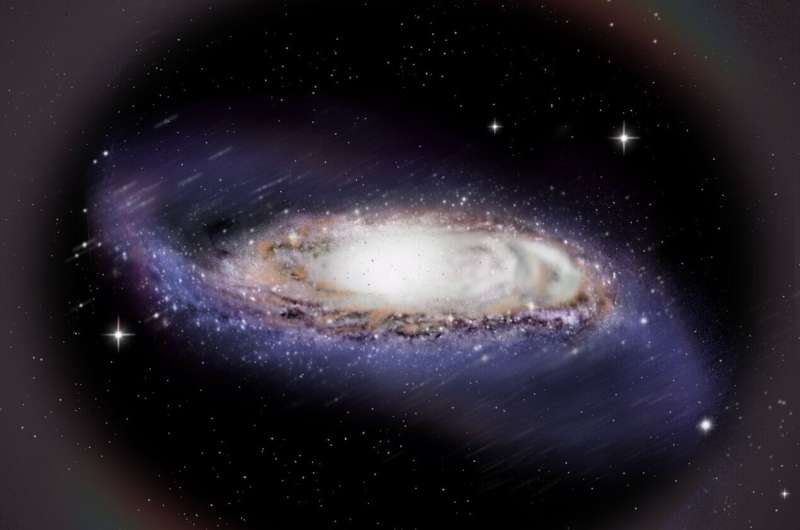This article has been reviewed according to Science X's editorial process and policies. Editors have highlighted the following attributes while ensuring the content's credibility:
fact-checked
peer-reviewed publication
trusted source
proofread
'Motion-picture' method reveals shape of the Milky Way's dark matter halo

An international team has pioneered a "motion-picture" method for measuring the precession rate of the Milky Way's disk warp. Using a sample of Cepheid variable stars of different ages, this method allows the precession direction and rate of the Milky Way's warp to be clearly observed.
Based on these measurements, the research team revealed that the current dark matter halo of the Milky Way is slightly oblate. The resulting paper, "A slightly oblate dark matter halo revealed by a retrograde precessing galactic disk warp," is published in Nature Astronomy.
In the nearby universe, nearly one-third of disk galaxies are not perfect disks but exhibit a warped shape resembling a potato chip. Astronomers refer to this phenomenon as a disk warp. The Milky Way, as a typical disk galaxy, also has this warp feature.
This tilted, rotating galactic disk, much like a spinning top, inevitably undergoes precession due to the torque exerted by the surrounding dark matter halo. However, the measurement of this important dynamic parameter, both in direction and rate, has been highly debated.
This is because previous measurements relied on indirect kinematic methods, where the tracers used are subject to dynamical perturbations or heating effects, greatly limiting their accuracy and precision.
This study used 2,600 classical Cepheid variable stars discovered by Gaia as tracers, along with precise distance and age data from both Gaia and LAMOST. Using this sample, the researchers applied the "motion-picture" method to construct the three-dimensional structure of the Milky Way's disk across populations of various ages.
By "seeing" how the disk warp evolves with age, this study found that the warp precesses in a retrograde direction at a rate of 2 km/s/kpc (or 0.12 degrees per million years).
Further detailed measurements show that the precession rate decreases with radial distance, indicating that the current dark matter halo enveloping the warp is slightly oblate, with a flattening value q between 0.84 and 0.96.
This measurement provides a crucial anchor point for studying the evolution of the Milky Way's dark matter halo.
More information: Yang Huang et al, A slightly oblate dark matter halo revealed by a retrograde precessing galactic disk warp, Nature Astronomy (2024). DOI: 10.1038/s41550-024-02309-5
Journal information: Nature Astronomy
Provided by Peking University





















